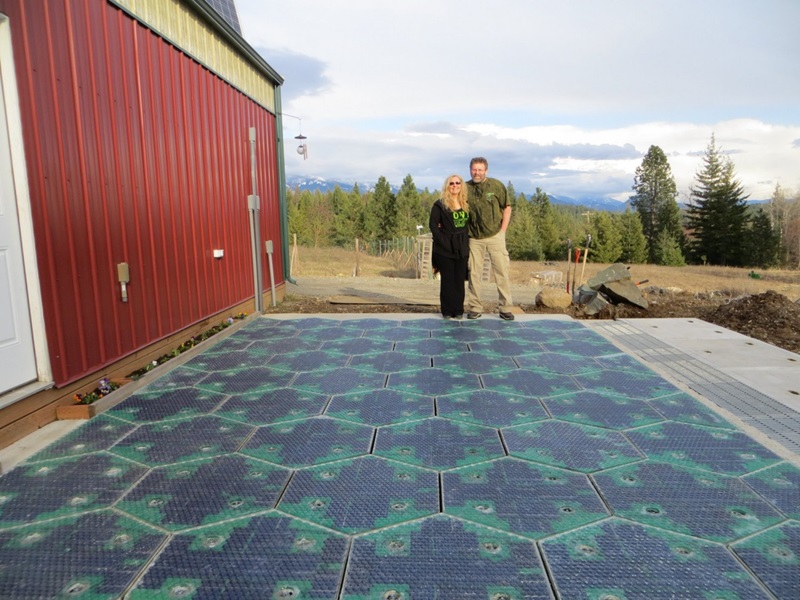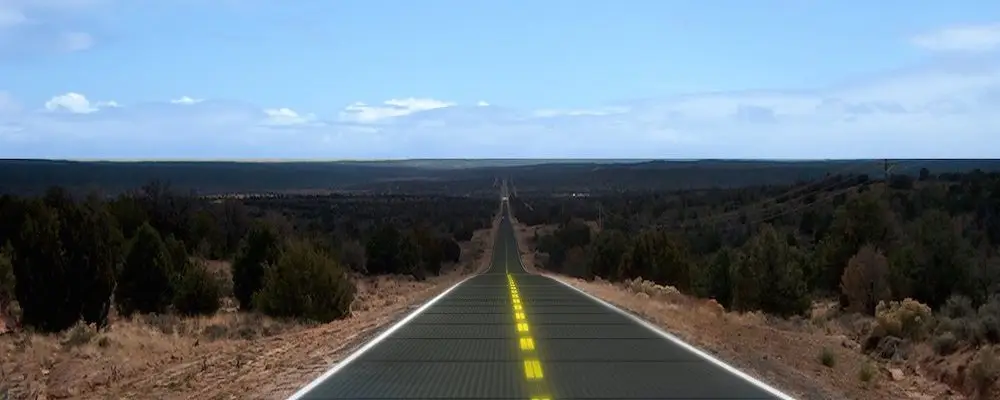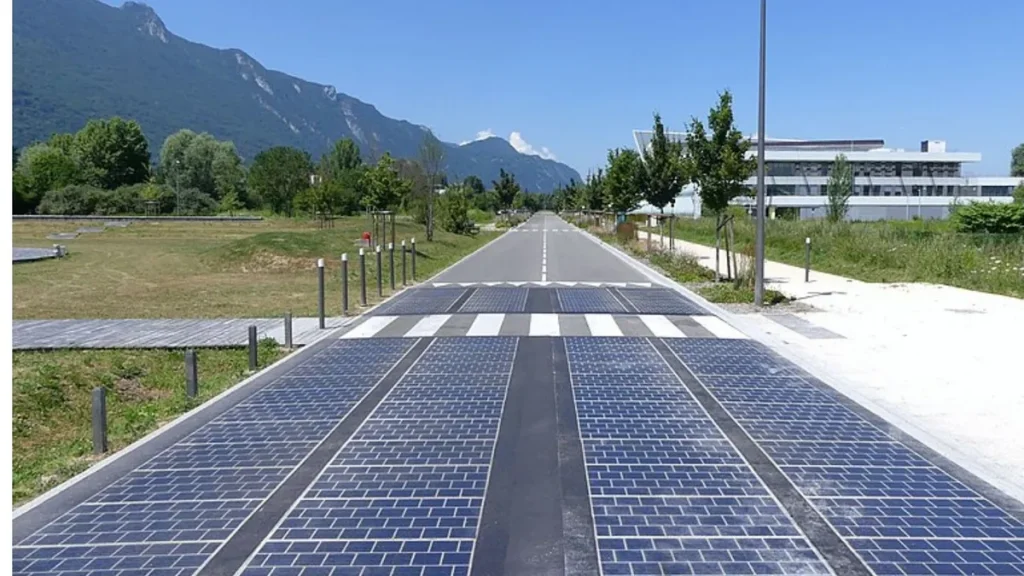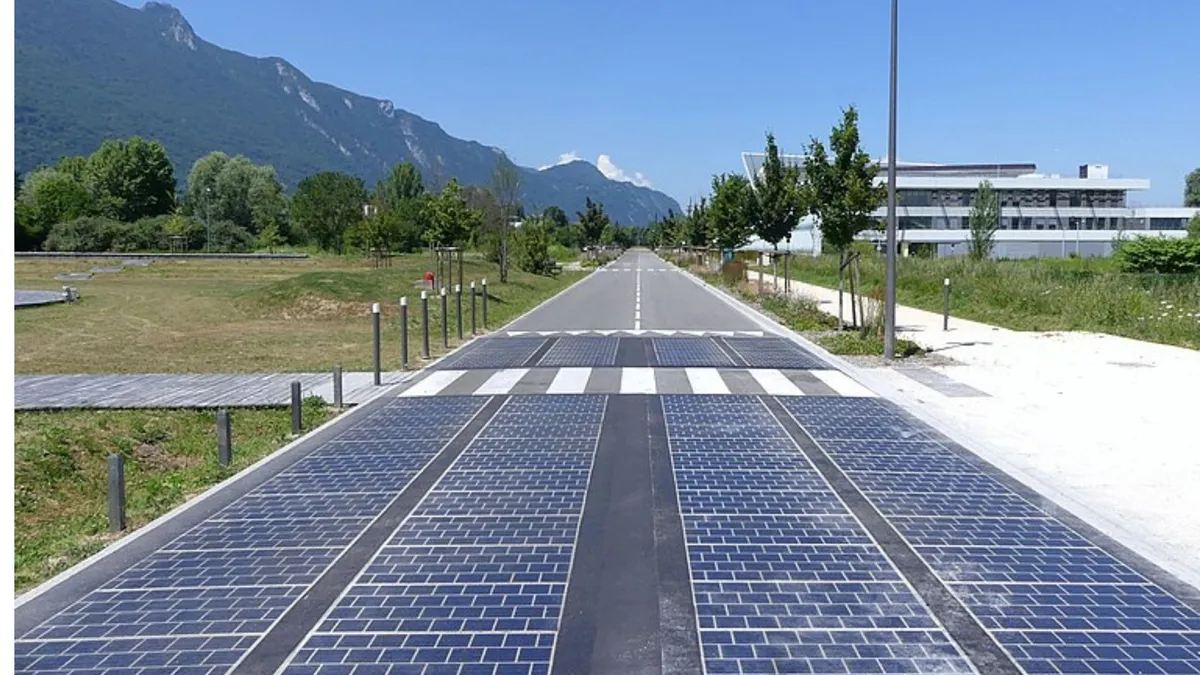EarthTalk®
From the Editors of E – The Environmental Magazine
Solar roadways are an appealing concept but so far have not panned out like creators had hoped

Dear EarthTalk: Are solar roadways still a “thing”? Why don’t we have them everywhere now helping us keep our EVs charged up and rolling? — Jason M., Shelton, CT
In 2014 the concept of solar powered photovoltaic road panels that could collect sunlight and convert it into useable energy went viral when the Idaho-based company Solar Roadways heralded it as a solution to the global energy crisis. The company proposed developing solar-powered panels to form smart roads, highways and parking lots. These solar roadways would theoretically produce electricity while providing other smart features for the cars and trucks that drove on them.
According to Solar Roadways, the benefits of their solar roadways would be more than just the production of clean energy. The roads would provide heating to melt off snow and ice and would use LEDs for lighting and to warn about road obstructions. Solar roadways could also charge electric cars through inductive charging. This means that EVs would be charged just by driving on the solar roadways.
So why aren’t solar roadways being installed across the U.S.? Despite the possible benefits of solar roadways, implementation at scale would be quite a challenge. For one, since solar roadways would lie flat on the ground, they wouldn’t be ideal for maximizing their exposure to direct sunlight. On a regular solar farm, the panels are angled towards the sun to maximize efficiency, and even then, the typical solar panel can only use about 20 percent of the energy that the sun produces. It would be more efficient to run the solar panels alongside the road rather than on top of it. Creating solar roadways that can withstand heavy vehicle pressure while still letting in sunlight has been another difficult task. Also, there are safety and noise concerns. And the LEDs which would act as traffic lines and obstruction warnings are difficult to see during the day. Solar roadways are also incredibly expensive compared to regular old pavement.

While Solar Roadways has not implemented the concept as of yet in the U.S., there have been a few projects abroad that have attempted to turn the concept into reality. In 2016, the French company WattWay completed a 0.62-mile installation in Normandy, France. The project was met with excitement, but quickly fell flat as the road generated little energy and was unable to withstand normal traffic wear and tear. A similar thing happened in Jinan, China when in 2017 Chinese engineers constructed their own 0.62-mile solar roadway. It was closed within a week due to traffic damage and the theft of road panels.
While these false starts don’t bode well for the future of widespread solar roadways, EV charging roads may still be an option. In 2021 the state of Michigan pledged to complete a wireless charging road by 2023. The leading company in the project, Electreon, says that the EV charging road is complete, and will open to the public in the next few years after a testing period. The emergence of EV charging roads would promote the usage of electric cars and provide some reprieve from cars’ fuel emissions.
CONTACTS:
All about Solar Roadways: the promise versus the reality, https://www.solarreviews.com/blog/all-about-solar-roadways;
Understanding Solar Roadways: An Engineering Failure of Epic Proportions, https://interestingengineering.com/innovation/solar-roadways-engineering-failure;
First wireless charging road in the U.S. completed in Michigan, https://www.teslarati.com/first-wireless-charging-road-u-s-michigan/.

EarthTalk® is produced by Roddy Scheer & Doug Moss for the 501(c)3 nonprofit EarthTalk. See more at https://emagazine.com. To donate, visit https://earthtalk.org. Send questions to: question@earthtalk.org.

